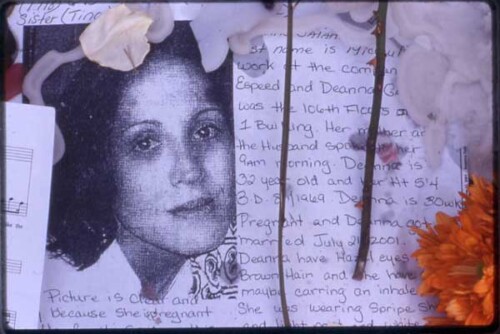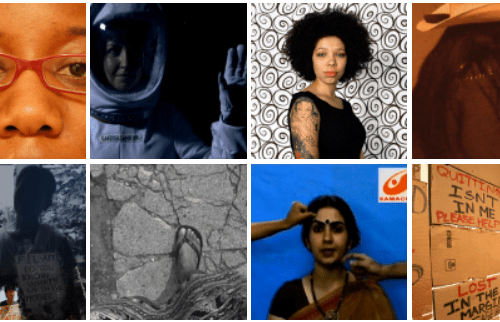Addressing Policy
At the time of writing, in 2007, national legislators are agreed that the immigration system needs to be overhauled—but that is where the agreement ends. Congressional debates are polarized between those who would strengthen existing laws and enforcement and those who propose a more open policy for newcomers. In 2006, a series of federal bills was proposed in one of the houses of the U.S. Congress that could potentially move immigration law into a direction that further blurs the boundaries between police-enforced criminal law and the civil statutes under the purview of the federal immigration system. Congress continued to consider such bills in 2007 in its debates over immigration reform, but did not reach a resolution. Addressing basic flaws and gaps in immigration law could potentially alleviate some systemic problems enumerated here.
Policy changes and full investigations of the conditions of incarceration could make a world of difference in the situations of immigrants generally—and immigrant women in particular. A small number of recent pieces of legislation now exist to provide relief to victims of domestic violence and trafficking that are particularly useful to those who feel they risk arrest or deportation in coming forward. These include the T Visa, which offers a legal visa for trafficking victims who cooperate with investigations of the traffickers, the U Visa, which also provides a visa for victims of some violent crimes, and provisions of the Violence Against Women Act (known as VAWA), which allows domestic violence victims to apply for legal status independent of their abuser. Usage of these remedies is low, as many women are not familiar with these visas or fear other consequences if they were to enter the legal system.
Advocates call for a range of additional changes to U.S. law that would help reverse the more egregious conditions that immigrant women in the criminal justice system currently face, as well as those who come in contact with the criminal justice system as victims, partners, parents, children, family and friends of offenders. In considering any such changes, it is critical that the voices of incarcerated immigrant women be heard. Among the proposals are:
- Overhaul the immigration system to reduce the numbers of deportations and detentions by providing legal pathways into U.S. society.
- Provide alternatives to incarceration for civil offenses such as violations of immigration law, including awaiting a decision on an asylum case; low-level drug and non-violent crimes, which affect women disproportionately (both U.S. citizens and immigrant women); and mothers who have committed nonviolent crimes and have dependent children.
- Offer gender- and culture-sensitive programs for immigrant women who seek help for such problems as drug addiction, domestic violence, and mental health; who are arrested or incarcerated so that they have access to information and legal assistance in their own language; who are in court, ensuring that women’s rights are protected and that appropriate language translation is used; and who are in jails and prisons, accommodating their particular needs related to health, reproduction, and motherhood.
- Increase enfranchisement options for former or current offenders.
Conclusion
We have presented here an outline of several key areas of concern that call for applying a (raced/classed) gendered lens to the intersection of immigration and incarceration. The policy areas listed above would be steps in the right direction toward addressing these issues. Policy-making needs to be critically informed by solid social-scientific research, as well as such initiatives as investigative journalism. Therefore this article proposes that such research give broader and deeper attention to the growing presence of foreign-born women in our jails and prisons. There are, admittedly, many challenges to such a task: the difficulty of access to those “inside,” the fear of future consequences that inmates feel if they speak up, the constant moving of detainees held on immigration charges from facility to facility, and the loss of contact with former detainees who have been deported. Such challenges call for stronger communication linkages between researchers, journalists, advocates, local ethnic communities, and policy makers—including international human rights monitoring bodies. Social and political action are essential if we are to change the conditions for immigrant (and non-immigrant) women caught in the web of the criminal legal system.
Authors’ Resources
- Natalie J. Sokoloff, “Women Prisoners at the Dawn of the 21st Century,” Women & Criminal Justice, 16(1/2): 127-135.
- Natalie J. Sokoloff, “The Impact of the Prison Industrial Complex on African American Women,” Souls: A Political Journal of Black Politics, Culture and Society, 5(4): 31-46, Fall 2003.
- The Criminal Justice System and Women: Offenders, Prisoners, Victims, and Workers. Edited by B.R. Price and N. J. Sokoloff, Eds. 2004. McGraw-Hill.
- Domestic Violence at the Margins: Readings on Race, Class, Gender, & Culture. Edited by N.J. Sokoloff with C. Pratt, Eds. 2005. Rutgers University Press.
- Multicultural Domestic Violence Bibliography by Natalie Sokoloff
- Women and Current Immigration Policies by Elizabeth J. Clifford and Susan C. Pearce.
Fact Sheet (PDF) published by Sociologists for Women in Society Fall 2004




